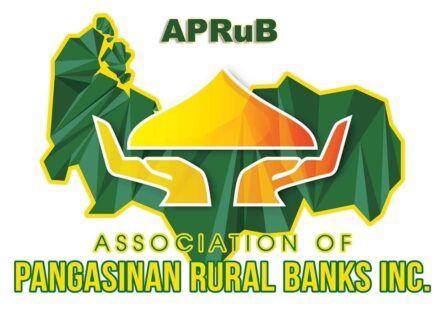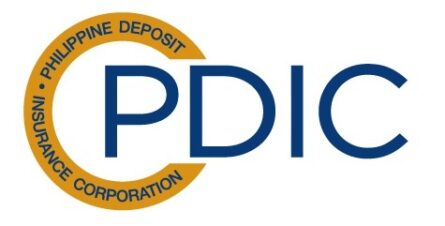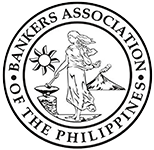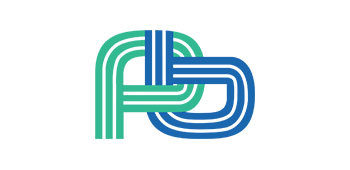PANGASINAN BANK (A RURAL BANK), INC. is a former savings and loan bank operating since 1976 under the supervision of the Bangko Sentral ng Pilipinas (BSP) and Philippine Deposit Insurance Corp. (PDIC). Since 2001, the bank operates as a rural bank catering to the financial needs in rural areas on a wider perspective, with 6 branches strategically located within the provinces of Pangasinan and La Union.
BRIEF HISTORY
OF PANGASINAN BANK (A RURAL BANK), INC.
Formerly Pangasinan Savings and Loan Bank
In the early part of 1976, a closely-knit circle of friends from San Fabian, Pangasinan informally gathered together and decided to organize the second thrift bank in Pangasinan. The group was composed of Dr. Gregorio Tercero De Guzman, Jr., a private medical practitioner, Atty. Conrado P. Gubatan, at that time Mayor of San Fabian, Mr. Daniel P. Calimlim, an insurance underwriter also engaged in the poultry business, and Mr. Mauro S. Abalos, an accountant, and businessman. They invited Msgr. Oscar A. Aquino, who was then parish priest of San Fabian and a native of Mangaldan joined them. With the support of some relatives, namely, Dr. Letecia L. Quinto and Mr. Alfredo B. Quinto, related by affinity to Dr. Gregorio Tercero De Guzman, Jr. and Dr. Loreto J. Gubatan, a dentist and brother of Atty. Conrado P. Gubatan, the group managed to deposit Five Hundred Thousand Pesos (P 500,000.00) with the Central Bank and this amount was the minimum paid-up capital required of a thrift bank at that time.
In August of 1976, the first staff of the bank led by Dr. and Mrs. Gregorio Tercero De Guzman, Jr. underwent a 15-day training at the Central Bank Training Institute. The basic training course was specially designed for employees of savings and loan associations, one of three categories of thrift banks.
With a fully trained staff, the Bank opened on October 3, 1976, in a rented building in Mangaldan, right at the center of business of the town. The Banks name back then was PANGASINAN SAVINGS AND LOAN ASSOCIATION, INC. The blessing was officiated by the late Msgr. Federico Limon, Archbishop of Lingayen-Dagupan with prospective depositors, hundreds of them, in attendance. The guest of honor was the late Mr. Manuel Santos, the Central Bank Director in charge of savings and loan associations.
At the end of 1976, after three months of operation, the Association exceeded break even and realized a profit of P 137.00. Since then, the Corporation has been profiting except for the troublesome years that followed the assassination of Ninoy Aquino.
One year after the bank’s establishment, due to profitable operation, the Central Bank granted rediscounting privileges and availing of cheap special time deposits (STD) for supervised and non-supervised credit. These privileges expanded the resources of the Bank although most of the time, the Bank did not need loans from the Central Bank due to the rapid increase of deposits from the general public. The Bank has been a pioneer in the financing of the cotton industry which flourished in San Fabian and neighboring towns in the eighties. It was in fact one of the biggest financiers of cotton planting in the entire country.
After exactly two years of operation, on October 3, 1978, the Bank opened a Savings Agency, its first branch unit, in San Fabian (which was converted into a full branch in 1990). Then came a rapid succession of branches that were also approved by the CB because of profitable operation and efficient management and strict adherence to all rules and regulations prescribed by the CB. The Malasiqui branch was opened on April 22, 1979, followed by the Binmaley branch on June 17, 1979, and the Alaminos Branch on March 3, 1980.
From December 31, 1977, to June 30, 1980, the Bank’s stockholders gradually increased the paid-up capital of the Bank using their hard-earned savings, from P 500,000.00 to P 2 Million to comply with the minimum capital requirement prescribed by the Central Bank. When the Bank had attained the P 2 Million mark, it earned the right to change its corporate name to PANGASINAN SAVINGS AND LOAN BANK, INC., and its new name was registered with the Securities and Exchange Commission.
In 1981, the Central Bank required another round of capital build-up with P 5 Million as the target for savings and loan associations outside Metro Manila. But due to the economic crisis that started in 1983, the stockholders were not able to comply immediately with the increase in capital. To remedy the situation, the stockholders channeled all available dividends from the undivided profits to stock dividends and the members of the Board of Directors infused back all their per diem and honoraria.
Despite the economic debacle during the martial law years, PSLB maintained consistent growth in resources and total deposits. In 1980, it was adjudged the First runner-up as the Best Savings and Loan Association in the country by the Philippine League of Savings and Loan Associations, with the Central Bank acting as the judge of the contests.
In 1983, PSLB was accredited as a participating or originating bank by the National Home Mortgage Finance Corporation to grant PAG-IBIG housing loans, the only accredited bank in Pangasinan. It was given a continuous automatic revolving line of P 1.5 Million. Since then, PSLB has released about 150 housing loans amounting to about P 15 Million. On December 22, 1984, the NHMFC granted PSLB a P 7.4 Million new credit line, one of the only 38 banks given accreditation.
From P 500,000, the Bank’s resources had reached P 143 Million at the end of 1996. The original stockholders had managed to increase the Bank’s capital to P 10 Million in 1992. But because the CB in 1992 had required all thrift banks operating outside Metro Manila to have a P 20 Million capital, the original stockholders invited S & F Realty Corporation owned by Mr. & Mrs. Romualdo C. Siapno to infuse additional capital. Finally, the P 20 Million capital requirement was complied with in 1996 only to be increased by the CB (now the Bangko Sentral ng Pilipinas) to P 40 Million. The latest minimum capital requirement for thrift banks is P 52 Million at the end of 2000 and P 64 Million at the end of the year 2001.
The present total capital accounts of PSLB are P 44 Million, or P 20 Million short of the required capital. Knowing their limited capability, the present stockholders decided to downgrade the Bank’s category to the rural bank. The group had also in mind the greater privileges now being enjoyed by rural banks like lower reserve requirements and easier branching requirements. The Bank will then be able to open branches in Rosario, La Union where it owns a prime lot, and in other towns of Pangasinan, and will be eligible also to offer current accounts to its clients. The new name of the Bank as approved by the BSP last January 2001 and by the SEC on August 27, 2001, is now PANGASINAN BANK (A RURAL BANK), INC.
In August 2011, the capitalization of the Bank reached P50 million. Since the bank is over capitalized when it downgraded to rural bank, the bank decided to expand its operation to the north, and in March 26, 2007 the bank opened its first branch outside of Pangasinan located at Rosario, La Union.
EARLY YEARS:
- 1976 – The bank was organized as the second thrift bank in Pangasinan with a minimum paid up capital of P500, 000.00 as a requirement for a thrift bank that time.
- August of 1976 – When the first staff of the bank led by Dr. and Mrs. Gregorio T. de Guzman, Jr. underwent a 15-day training at the Central Bank Training Institute.
- October 3, 1976 – When the bank first opened and was then was named PANGASINAN SAVINGS AND LOAN ASSOCIATION, INC.
GROWTH YEARS:
- December 31, 1977 – The Bank’s stockholders gradually increased the paid-up capital of the Bank using their hard-earned savings, from P 500,000.00 to P 2 Million to comply with the minimum capital requirement prescribed by the Central Bank.
- October 3, 1978 – The Bank opened a Savings Agency, its first branch unit, in San Fabian.
- April 22, 1979 – Opening of Malasiqui branch.
- June 17, 1979 – When Binmaley branch was opened.
- March 3, 1980 – When Alaminos branch was opened.
- 1980 – It was adjudged the First runner-up as Best Savings and Loan Association in the country by the Philippine League of Savings and Loan Associations, with the Central Bank acting as the judge of the contests.
- 1981 – The Central Bank required another round of capital build-up with P 5 Million as the target for savings and loan associations outside of Metro Manila.
- 1983 – As economic crisis was going on, the stockholders were not able to comply immediately with the increase in capital. To remedy the situation, the stockholders channeled all available dividends from the undivided profits to stock dividends and the members of the Board of Directors infused back all their per diem and honoraria.
- PSLB was accredited as a participating or originating bank by the National Home Mortgage Finance Corporation to grant PAG-IBIG housing loans, the only accredited bank in Pangasinan. It was given a continuous automatic revolving line of P 1.5 Million.
- December 22, 1984 – The NHMFC granted PSLB a P 7.4 Million new credit line, one of the only 38 banks given accreditation.
- 1996 – The Bank’s resources had reached P 143 Million from its original resources of P500,000.00.
- January 2001 – The BSP approved the new name of the bank.
- August 27, 2001 – The new name of bank is now PANGASINAN BANK, (A RURAL BANK) INC. approved by BSP and SEC.
- 2005 – The bank computerized its loan and deposit operations.
- March 26, 2007– Opening of the first branch outside Pangasinan which is located at Rosario, La Union.
- 2008 – Pangasinan Bank released its first radio advertisement.
- August 19, 2011 – The total capitalization reached P50 million
- January 30, 2015 – An agreement was entered into between the bank and Gate Distribution Enterprise, Inc. regarding the services of ECPAY for the provision of an electronic system infrastructure which includes electronic loading and payment facility. Additional product of the bank.
- March 17, 2015 – Marked the first release of Auto Loan Product of the bank. Its loan concentration rise-up to 85% to date.
- August 24, 2022 – Amendments of the BSP as to the Minimum Capitalization or Rural Banks from 50 million to 120 million for Rural Banks with 6 to 10 branches including Head Office.
- March 16, 2023 – Bank’s application with the Bangko Sentral ng Pilipinas regarding the downgrade of Rosario Branch into Branch Lite Unit.
INTERVENING YEARS:
- Recognition of Bank Employees labor union and several completed cycles of CBA negotiations/implementation of DWL increases per DOLE mandate.
- Restructuring of Bank Operations Set-Up and Organizational Plantilla:
- COO*/General Manager/*Security Officer
- Sales Manager*
- Remedial Officer/Pollution Officer
- Centralized Loan Processing Unit**
- Credit Risk and Review Unit
- MIS-IT Section
*Position now vacant
**Loan Bookkeeper/Processors reverted back to branches.
AFFILIATION / MEMBERSHIP
Bangko Sentral Ng Pilipinas (BSP)
Philippine Deposit Insurance Corporation (PDIC)
Deposits are insured by PDIC up to P1 Million per depositor
Rural Bankers Association of the Philippines (RBAP)

Association of Pangasinan Rural Banks, Inc.
Negative File Information System (NFIS)


